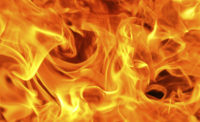Commit to C.A.R.E. addresses air quality impacts of wildfire smoke

In response to an unusually early and active start to the 2023 Canadian wildfire season, AIHA has made available resources to help the public protect itself from poor indoor air quality caused by wildfire smoke on the association’s Commit to C.A.R.E. website. Wildfire smoke is a health hazard that the Centers for Disease Control and Prevention (CDC) warn may irritate the eyes and respiratory system and worsen chronic heart and lung diseases. The tools offered on Commit to C.A.R.E. are free of cost. Home and business owners in particular may benefit from the assistance of these resources in improving air quality within buildings where they live, work, and do business.
Commit to C.A.R.E.’s resources addressing indoor air quality are as follows:
- “In-Room Air Cleaners: Why They Work and What To Keep in Mind” a video covering the usefulness and effectiveness of in-room air cleaners and the factors to consider when selecting and using one.
- “All About In-Room Air Cleaners” (PDF), an infographic explaining, in simplified terms, concepts related to in-room air cleaners, from the benefits of these devices to the different types available.
- “Guide to Air Cleaners in the Home” (PDF), a seven-page guide to portable air cleaners and filters for furnaces and heating, ventilation, and air-conditioning (HVAC) systems in homes, including placement considerations and maintenance recommendations.
All resources on the Commit To C.A.R.E. (Community, Awareness, Responsibility, Equity) website are free to the public and funded through a cooperative agreement between AIHA, the Integrated Bioscience and Built Environment Consortium (IBEC), and CDC’s National Institute for Occupational Safety and Health (NIOSH). A range of comprehensive workplace and community resources developed by CDC, IBEC, and AIHA, including checklists, posters, flyers, and videos are accessible on Commit2Care.org.
The Commit to C.A.R.E. Pledge
Commit to C.A.R.E. provides free resources and tools for businesses to safeguard their employees and communities. All tools developed under this project have been created with the needs of a nonscientific and non-medical audience in mind. We believe protecting yourself and others shouldn’t be difficult or complicated. Our tools are designed to empower accountability and responsibility while facilitating fair and equitable access to information. Take the Commit to C.A.R.E. pledge today.
Looking for a reprint of this article?
From high-res PDFs to custom plaques, order your copy today!





